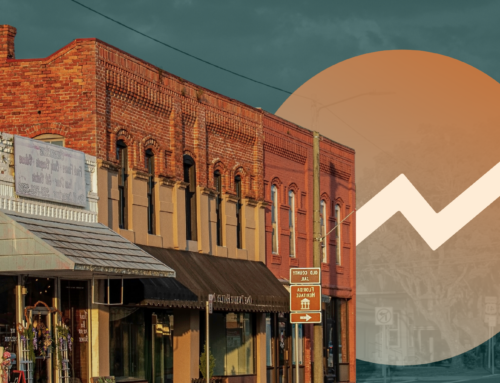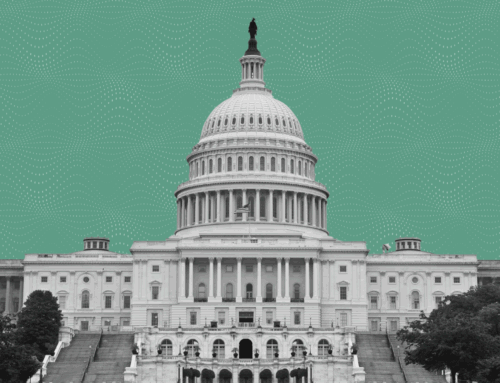New Research From The Economic Innovation Group Finds A Surge In High-Poverty Neighborhoods Over Past Four Decades Despite National Economic Expansion
Washington, D.C. – Today, the Economic Innovation Group (EIG) launched the Neighborhood Poverty Project with the release of two new reports on the spread and evolution of high-poverty neighborhoods in the United States over the last four decades, underscoring a challenge that now leaves many neighborhoods particularly vulnerable to the effects of the current crisis. The two companion papers, “The Expanded Geography Of High-Poverty Neighborhoods,” and “The Persistence Of Neighborhood Poverty,” find that while the last national economic expansion brought growth and prosperity to many areas, it failed to reverse the spread of high-poverty neighborhoods the country has experienced since 1980. The research demonstrates that it is much more common for neighborhoods to fall into and remain in poverty than to climb out of it.
“As we confront the economic crisis caused by COVID-19, it’s important to understand that many communities never recovered from the last one in spite of years of sustained national-level growth,” said EIG President and CEO John Lettieri. “After this crisis, simply returning to the previous economic ‘normal’ won’t suffice for residents of America’s high-poverty neighborhoods. We need a new generation of place-based policies to help ensure national growth translates to local revitalization where it is needed most.”
Authored by EIG’s August Benzow and Kenan Fikri, the research shows that national-level growth and recovery alone are not enough to lift the country’s most vulnerable communities out of poverty. Even when a neighborhood does climb out of poverty, it is often surrounded by neighborhoods going in the other direction. The research also finds a widening income gap between high- and low-poverty neighborhoods, and that poor Americans have become more concentrated in poorer neighborhoods over time.
“Poor places perpetuate poverty, and the entrenchment of poor places we document over the past several decades holds the entire economy back. Put simply, the country cannot reach its full potential if large shares of its citizens cannot reach theirs,” said EIG Research Director Kenan Fikri. “This research challenges us all to use the current moment as a reset. Today, it is exceptionally rare for a once-poor neighborhood to ever turn around. What tools do we need to make it commonplace?”
“The Persistence Of Neighborhood Poverty” paper contains profiles of New York City, Memphis, Los Angeles, Winston-Salem, Indianapolis, and Houston to explore some of the unique challenges faced by different types of cities.
This research serves as an important reminder as policymakers prepare to rebuild from the current economic crisis: Without a different approach to economic growth and recovery, we will continue to see a proliferation of new high-poverty places.
Key findings from the reports include:
- Neighborhood poverty is “sticky;” it is far easier for neighborhoods to fall into and remain in poverty than to climb out of it.
- Two-thirds of metropolitan neighborhoods with a high poverty rate (30 percent or higher) in 1980 were still high-poverty in 2018, making them persistently poor.
- From 1980 to 2018, nearly 4,300 neighborhoods, home to 16 million Americans, crossed the high-poverty threshold and the total population residing in high-poverty neighborhoods doubled, rising from 12 million to 24 million Americans.
- In spite of decades of national growth and a record period of economic expansion after the Great Recession, nearly half of America’s 100 largest cities did not have a single census tract improve from “high poverty” to “low poverty” since 1980.
- Only 14 percent of neighborhoods with a poverty rate of 30 percent or higher in 1980 had a poverty rate below 20 percent in 2018.
- New York City alone accounts for 22 percent of all turnaround neighborhoods nationwide. These neighborhoods attract a lot of attention, but they are ultimately—and unfortunately—outliers.
- Poor Americans have become relatively more concentrated in poorer neighborhoods in recent decades. In 1980 more of the nation’s poor lived in a neighborhood with a poverty rate below 10 percent than in a high-poverty neighborhood, the inverse of what we find today.
- Meanwhile, real median household income for the average high-poverty neighborhood declined over the last two decades after growing robustly in the 1980s and the 1990s.
- The income gap between high-poverty neighborhoods and those with a low poverty rate (below 20 percent) increased by more than one-quarter from 1980 to 2018.
- While the proportion of Black Americans living in high-poverty areas has declined, Black Americans still make up half of the population in the average persistent poverty tract, the share of Hispanic Americans living in poverty has surged over the last few decades, and someone who is Black and poor is three times as likely to live in a high-poverty neighborhood as someone who is white and poor.
About the Economic Innovation Group (EIG)
The Economic Innovation Group (EIG) is an ideas laboratory and advocacy organization whose mission is to advance solutions that empower entrepreneurs and investors to forge a more dynamic American economy. Headquartered in Washington, D.C. and led by an experienced, bipartisan team, EIG convenes leading experts from the public and private sectors, develops original policy research, and works to advance creative legislative proposals that will bring new jobs, investment, and economic growth to communities across the nation. For more information, visit eig.org.
###





